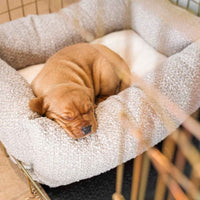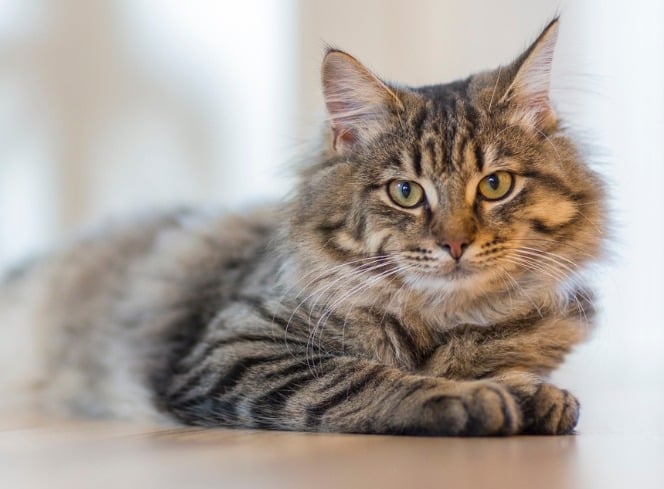Cats are beloved members of the family, and naturally, every pet owner wonders, "How long do cats live?" The average cat life expectancy can vary based on several factors, including breed, lifestyle, and overall care. Whether you're a first-time cat parent or an experienced feline aficionado, understanding cat longevity can help you provide the best possible care for your furry friend.
What Is the Average Cat Life Expectancy?
The average age of domestic cats typically falls between 12 to 18 years, though many cats live well into their twenties with proper care. Some breeds are known for their longevity, while others have shorter lifespans due to genetic predispositions.
Indoor vs. Outdoor Cats: Does It Affect Lifespan?

One of the most significant factors affecting a cat's longevity is whether they live indoors or outdoors.
- Indoor Cats: Generally, indoor cats enjoy a longer lifespan, often living between 15 to 20 years. This is largely due to a safer environment, regular meals, and access to routine veterinary care.
- Outdoor Cats: Cats who spend much of their time outdoors face more risks, including accidents, predators, and diseases. Their life expectancy can be significantly shorter, averaging 5 to 10 years.
If you have an outdoor cat, ensuring they have a safe space to explore, such as a secure garden or catio, can help increase their lifespan.
Breed-Specific Cat Longevity

Different cat breeds have varying life expectancies. Some breeds are naturally long-lived, while others may have genetic health issues that affect their lifespan.
- Life Expectancy of Maine Coon Cat: Maine Coons are known for their friendly nature and robust health. Their average lifespan ranges between 12 to 15 years, though some can live longer with excellent care.
- Siamese Cats: Siamese cats often live between 15 to 20 years, with many surpassing this with good nutrition and healthcare.
- Bengal Cats: Bengals have a lifespan of around 12 to 16 years, benefiting from their active lifestyle and strong genetics.
- Persian Cats: With their luxurious coats and unique features, Persian cats tend to have a lifespan of 12 to 17 years, but they require diligent grooming and healthcare.
Factors That Influence a Cat's Longevity

Several key factors play a role in determining the age expectancy of cats, including:
- Diet and Nutrition - A well-balanced diet is crucial to extending your cat's life. High-quality cat food rich in protein, vitamins, and essential fatty acids helps maintain overall health. Consider a mix of wet and dry food to support hydration and dental health. Here at Lords & Labradors we stock a wide range of nutritious cat foods for you to choose from.
- Regular Vet Care - Routine check-ups, vaccinations, and preventative treatments can significantly impact the average domestic cat lifespan. Regular vet visits help catch potential health issues early and keep your cat in optimal condition.
- Exercise and Mental Stimulation - Keeping your cat active and engaged through play, climbing structures, and puzzle toys can improve their overall health and longevity. Obesity is a common issue in domestic cats, which can lead to health problems and a shortened lifespan. Shop our range of cat trees and interactive cat toys to help keep your feline in the best shape possible.
- Grooming and Hygiene - Proper grooming, especially for long-haired breeds, helps prevent skin infections, hairballs, and matting. Regular brushing and dental care contribute to better overall health and longer life expectancy.
- Stress and Environment - A stress-free environment with plenty of safe hiding spots, cosy bedding, and affection can positively impact a cat's lifespan. Cats thrive in environments that offer security and routine.
How to Help Your Cat Live a Longer, Healthier Life
To ensure your feline companion enjoys a long, happy life, consider the following tips:
- Provide a high-quality, species-appropriate diet.
- Ensure they stay active with regular playtime.
- Keep up with routine veterinary visits.
- Offer a stress-free environment with plenty of enrichment.
- Use cat essentials such as scratching posts, cat trees, and interactive toys.

Conclusion
While the average age of domestic cats varies based on breed, lifestyle, and care, providing a loving and supportive environment can greatly enhance your cat's longevity. Whether you have an indoor lap cat or an adventurous outdoor explorer, their lifespan is ultimately in your hands.
For all the cat essentials you need to support your feline friend at every life stage, explore our range of high-quality cat food, toys, and accessories at Lords & Labradors.
































































































